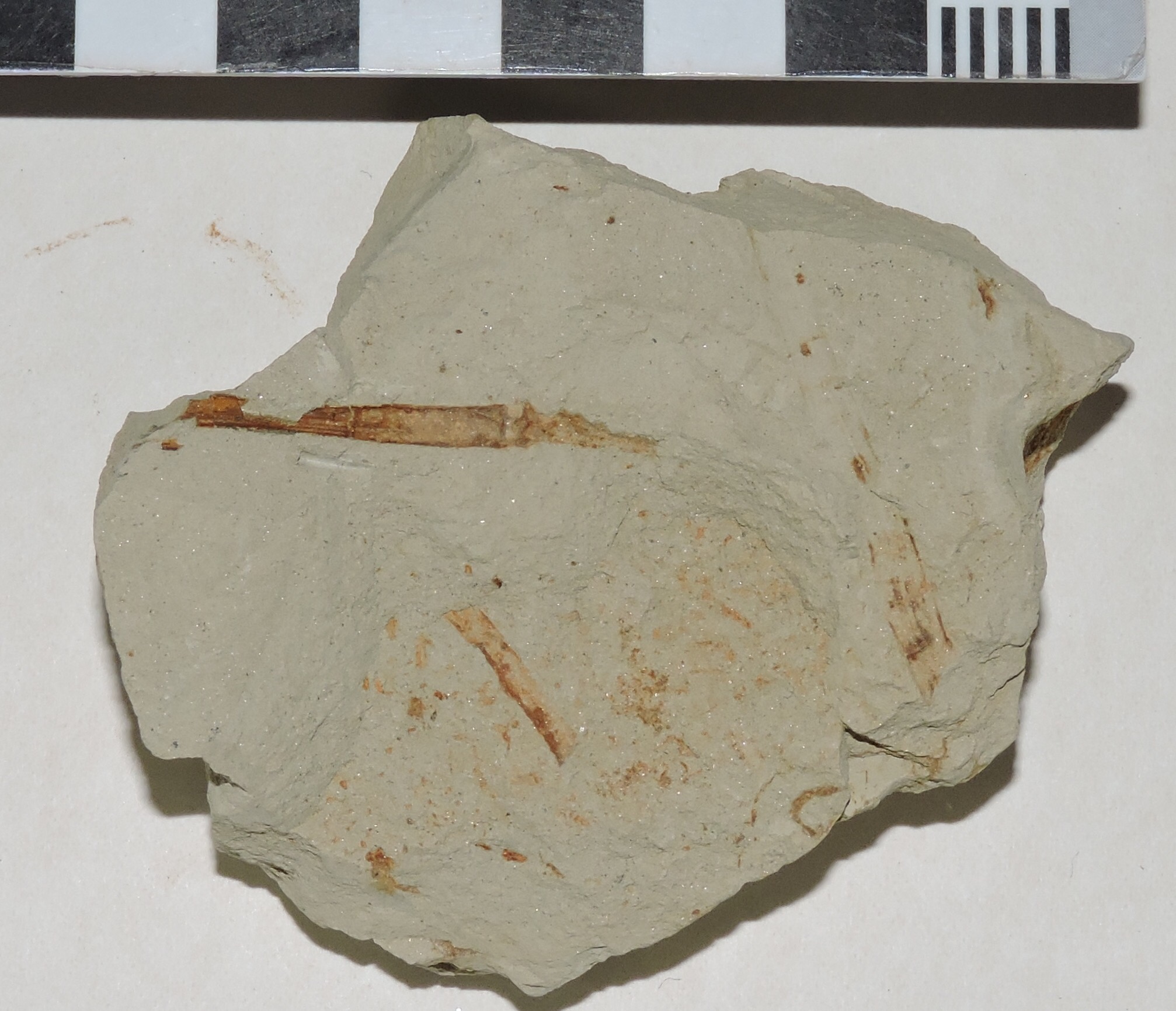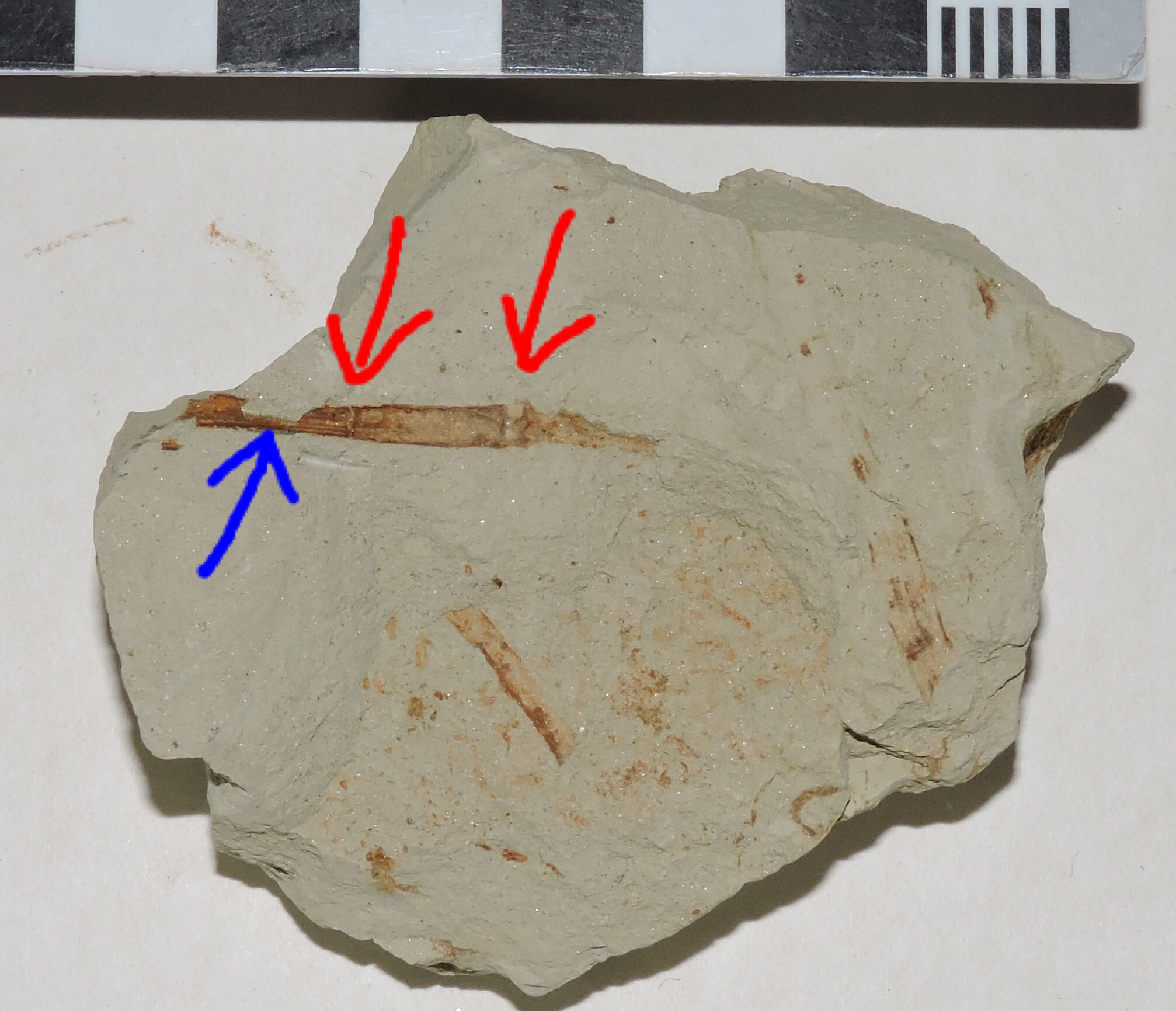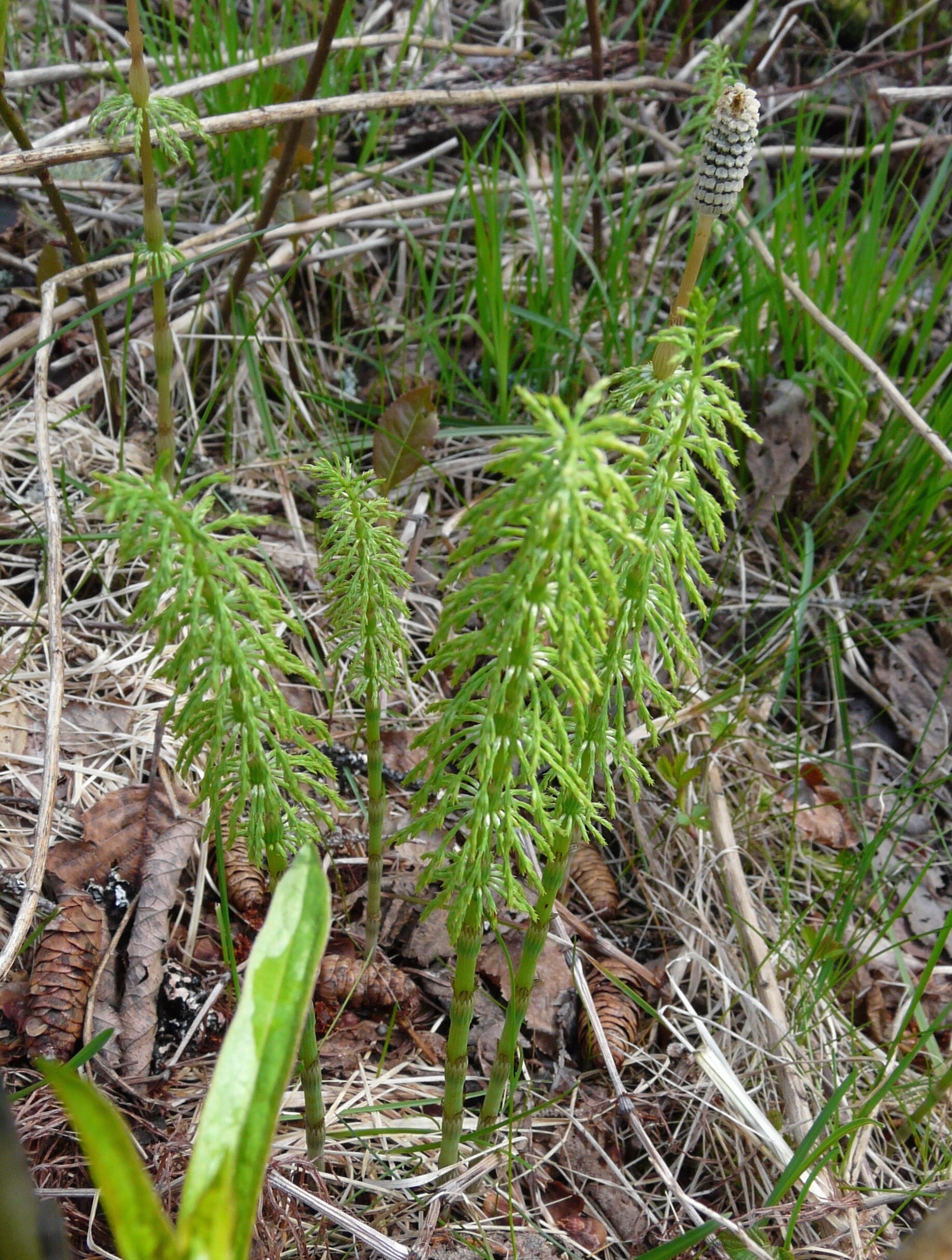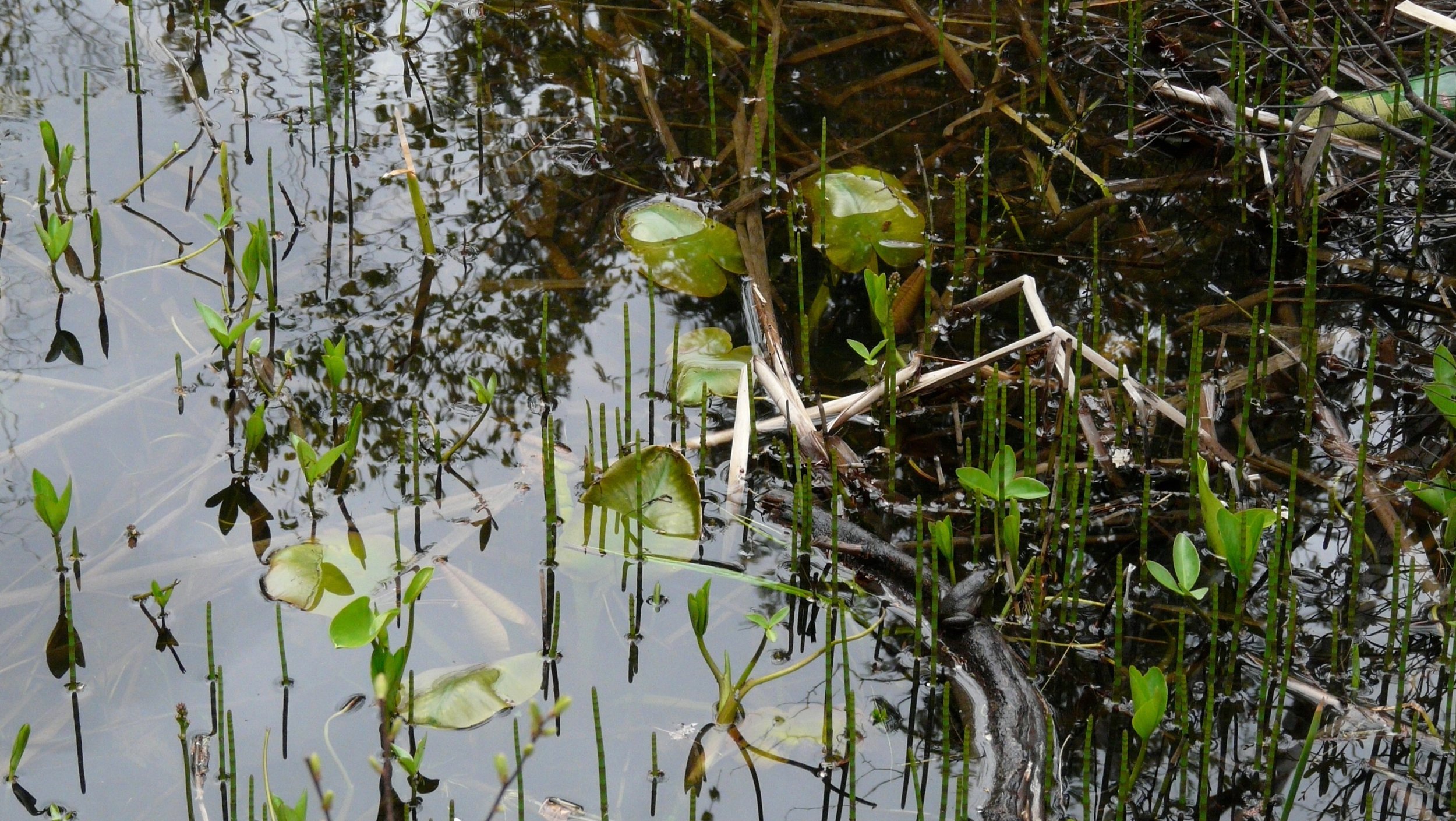 Fossil plants never seem to get the attention they deserve. Fossil animals, especially vertebrates, certainly are fascinating and have tons of things to tell us (they are, after all, what I've worked on for most of my career). But plants are exceptionally good indicators of past environmental conditions, besides being interesting organisms in their own right.Shown above is a sample of the San Timoteo Formation from northern Riverside County, specifically from the Edison El Casco Substation. This excavation yielded several thousand fossils, including plants, animals, and traces, which lived about 1.5 to 2.0 million years ago. The dark brown streaks in this sample are fragments of plant stems. While these don't look like much, there's enough here to make an identification.In the prominent stem toward the upper left, notice the fine grooves and ridges that run lengthwise along the stem (marked with the blue arrow, below). The stem also is divided into segments, marked below with the red arrows:
Fossil plants never seem to get the attention they deserve. Fossil animals, especially vertebrates, certainly are fascinating and have tons of things to tell us (they are, after all, what I've worked on for most of my career). But plants are exceptionally good indicators of past environmental conditions, besides being interesting organisms in their own right.Shown above is a sample of the San Timoteo Formation from northern Riverside County, specifically from the Edison El Casco Substation. This excavation yielded several thousand fossils, including plants, animals, and traces, which lived about 1.5 to 2.0 million years ago. The dark brown streaks in this sample are fragments of plant stems. While these don't look like much, there's enough here to make an identification.In the prominent stem toward the upper left, notice the fine grooves and ridges that run lengthwise along the stem (marked with the blue arrow, below). The stem also is divided into segments, marked below with the red arrows: These are both characteristics of the genus Equisetum, commonly known as the horsetail or scouring rush (the latter name comes from the high silica content, which makes them useful as an abrasive). Equisetum is an interesting plant, the last survivor of a group that goes back more than 350 million years. Rather than seeds they reproduce using spores, which are released from a cone-like structure (the sporangium) at the top of the plant. (There may be an impression of a sporangium attached to the stem in this specimen, but I'm uncertain about that.) Horsetails seem to be related to ferns, and according to some genetic studies may actually be highly specialized ferns. Below are some modern examples of the whole plant (at least the above-ground portions), one of which has grown its sporangium. Notice the segmented, striated stems, just as in our fossil example:
These are both characteristics of the genus Equisetum, commonly known as the horsetail or scouring rush (the latter name comes from the high silica content, which makes them useful as an abrasive). Equisetum is an interesting plant, the last survivor of a group that goes back more than 350 million years. Rather than seeds they reproduce using spores, which are released from a cone-like structure (the sporangium) at the top of the plant. (There may be an impression of a sporangium attached to the stem in this specimen, but I'm uncertain about that.) Horsetails seem to be related to ferns, and according to some genetic studies may actually be highly specialized ferns. Below are some modern examples of the whole plant (at least the above-ground portions), one of which has grown its sporangium. Notice the segmented, striated stems, just as in our fossil example: Equisetum also has interesting things to tell us about its ecosystem. Here's a group of modern Equisetum in their typical natural habitat:
Equisetum also has interesting things to tell us about its ecosystem. Here's a group of modern Equisetum in their typical natural habitat: Equisetum loves water, and typically grows in or near ponds or marshes. It seems to be one of the more common plants in the El Casco Substation deposits, and is found with a number of other plant species that prefer similar conditions. This all suggests that, at least locally, conditions there were much wetter than they are today.
Equisetum loves water, and typically grows in or near ponds or marshes. It seems to be one of the more common plants in the El Casco Substation deposits, and is found with a number of other plant species that prefer similar conditions. This all suggests that, at least locally, conditions there were much wetter than they are today.
